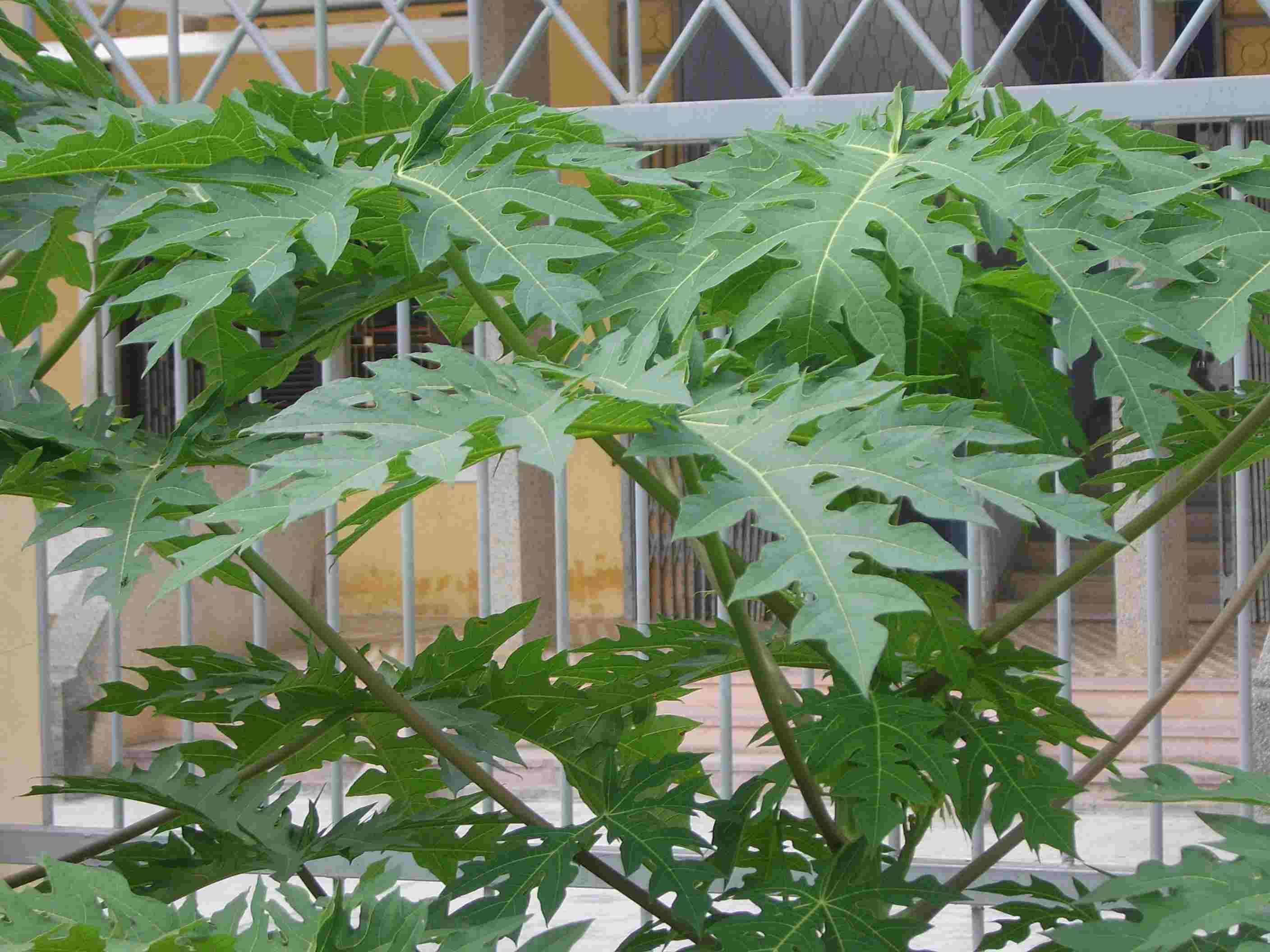Papaya
Scientific name:
Carica papaya
Family: Caricaceae
 Photo by Jewel Kinilitan-Bissdorf
Photo by Jewel Kinilitan-Bissdorf
Plant parts used
Leaves, seeds, unripe fruit
Mode of action
Repellent, insecticidal, rodenticidal, fungicidal (Sridhar; et. al., 2002: p. 34)
Formulation
| Materials |
Methods of preparation |
How to use |
Plant pests |
Papaya leaf extract
(Sridhar; et. al., 2002: p. 34)
50 grams of finely
shredded papaya leaves
8-12 ml of
soap
Muslin cloth
Pail
Water
|
Soak shredded leaves
in 100 ml of water.
Stir vigorously.
Let it stand overnight.
Squeeze the extract using
the muslin cloth.
|
Dilute the extract with
2-3 liters of water.
Add soap.
Stir well.
Spray thoroughly on
infested plant parts.
|
Leafy caterpillars
Coffee rust
Leaf rust
Mosaic virus
Powdery mildew
|
Papaya water extract
(Stoll: p. 143)
1 kg of papaya leaves
10 liters of water
Mortar and pestle
Soap
Strainer
Pail
|
Pound the leaves.
Add pounded leaves into the water.
Leave to stand for 2 days.
Strain.
|
Spray on
the target pests.
|
Grass looper
White grub
|
Papaya water extract
(Stoll: p. 143)
1 kg of papaya leaves
Water
Knife
Soap
Cotton sack
Pail
|
Finely shred the leaves.
Shake vigorously in a liter of water.
Squeeze through a cloth sack.
|
Dilute the filtrate with 4 liters of water.
Spray on the target pests.
|
Flower thrips
Fruit flies
|
Standard procedures for the preparation and application of the plant extracts
- Select plant parts that are free from diseases.
- When storing the plant parts for future usage, make sure that they are properly dried and are stored in an
airy container (never use plastic container), away from direct sunlight and moisture. Make sure that they are free from molds before using them.
- Use utensils for the extract preparation that are not use for your food preparation and for drinking and cooking water containers. Clean properly all the utensils every time after using them.
- Do not have a direct contact with the crude extract while in the process of the preparation and during the application.
- Make sure that you place the plant extract out of reach of children and house pets while leaving it overnight.
- Harvest all the mature and ripe fruits before plant extract application.
- Always test the plant extract formulation on a few infested plants first before going into large scale spraying. When adding soap as an emulsifier, use a potash-based one.
- Wear protective clothing while applying the extract.
- Wash your hands after handling the plant extract.
Effect on humans
None known during the write-up, however take extra caution as extract maybe harmful to people with sensitive skin.
Effect on non-target organisms
None

